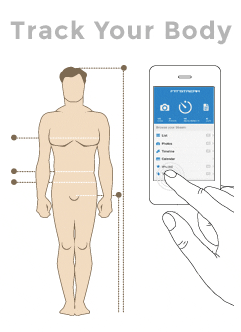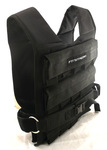Welcome to our guide for creating your own set of parallettes on a budget.

Home made parallettes
Bodyweight training is difficult but very rewarding and parallettes are the perfect platform on which to kick-start your bodyweight training program.
Parallettes can be used for many exercises such as handstand training, handstand push-ups, dips, planches and abdominal exercises like the L-sit. They're ideal for building a strong, solid and defined core and developing coordination, agility and balance skills.
As used in CrossFit gym's around the world, this article describes how to make your own parallettes out of plastic PVC piping for a sturdy, versatile bit of kit built on a budget.
Commercial parallettes can be expensive but if DIY isn't really your thing then check out these professional parallettes available to buy online.
Make your own parallettes video
Here's our quick video guide to making your PVC parallettes to help you on your way.
What you'll need to make the parallettes
The shopping list:
- Tape measure
- Pipe cutter or hacksaw
- 10' PVC pipe
- 4 x PVC 'T' joints
- 4 x PVC elbow / 90 degree joints
- 8 x PVC end caps
- PVC pipe glue (optional)
Please note that we used 1.5" pipe but as long as it's strong enough you can use any diameter you're comfortable with.
Making the Parallettes
Cut the pipe
Using the pipe cutter or hacksaw, measure and cut the piping into the base pieces of the parallettes (using tape around the pipe to mark the cut can help ensure you get a straight line).
Cut the pipe to suit your own requirements but we found the following sizes gave us the right height and length for our training.
- 2 x 18"
- 4 x 8"
- 8 x 5"
Join the pipe
Now you need to piece together the parts (we recommend that you bond with pipe glue for stability) -
- Join an elbow connector to each end of the 24 inch pipe.
- Attach an 8 inch pipe to the exposed ends of the elbow joint.
- Connect 'T' joints to the 2 exposed ends of the 8 inch pipe running at right angles to the longer pipe.
- Create the base of the parallettes by attaching 4 of the 5 inch pieces to each open end of the 'T' joints.
- Cap off the ends of the 5 inch pipes.
- [optional] To add grip texture use sandpaper to lightly sand the surface of the parallette or wrap with a racquet grip.
This completes one of your parallettes. Go back to step 1 and repeat for the set.
There you have it. Portable, lightweight and durable parallettes without breaking the bank.
Training with your Parallettes
Now you can start some serious bodyweight training and you have one of the most effective tools for developing strength, balance and agility - a set of parallettes. You can use them at the gym, in your home or even outdoors and they're lightweight, portable and strong.
If you're new to bodyweight training, you'll probably find parallettes incredibly frustrating at first as there are many static holds and movements that require a LOT of strength to perform. Try starting out with exercises like the Tuck Sit, L Sit, Wall Handstands and Handstand Push-ups, but the key thing is to stick with it and keep plugging away.
Parallette training helps develop dense, defined muscles and you will find that with some dedication you'll be able to perform impressive displays of strength, have more control over your entire body and able to work it as a more integrated and consolidated unit.
It's worth combining your parallette training with a set of gymnastics rings to practice other strength skills like pull-ups, muscle-ups or the iron cross. The rings are even less forgiving than parallettes. Try practising a dip exercise on each and see which is more difficult!










